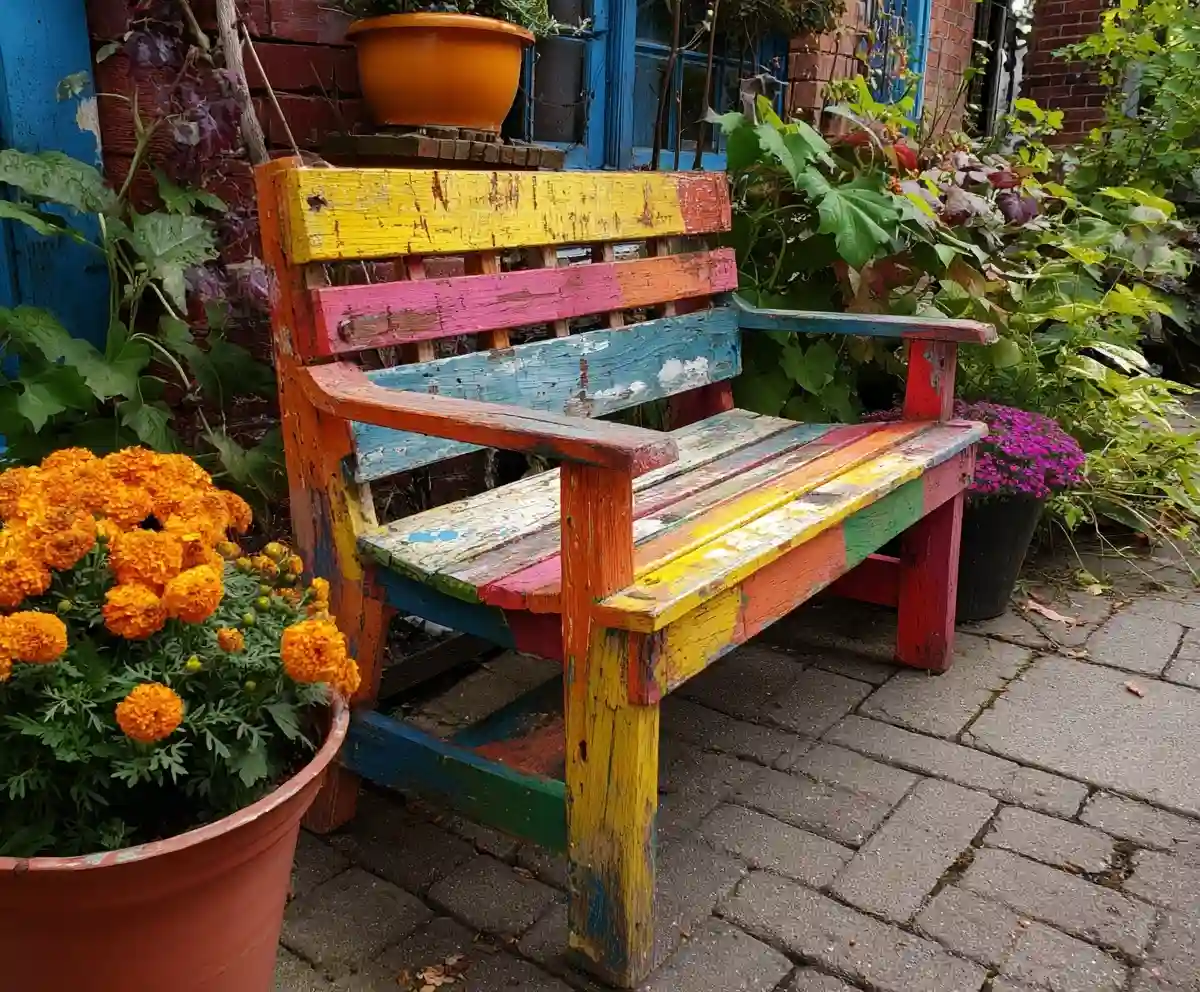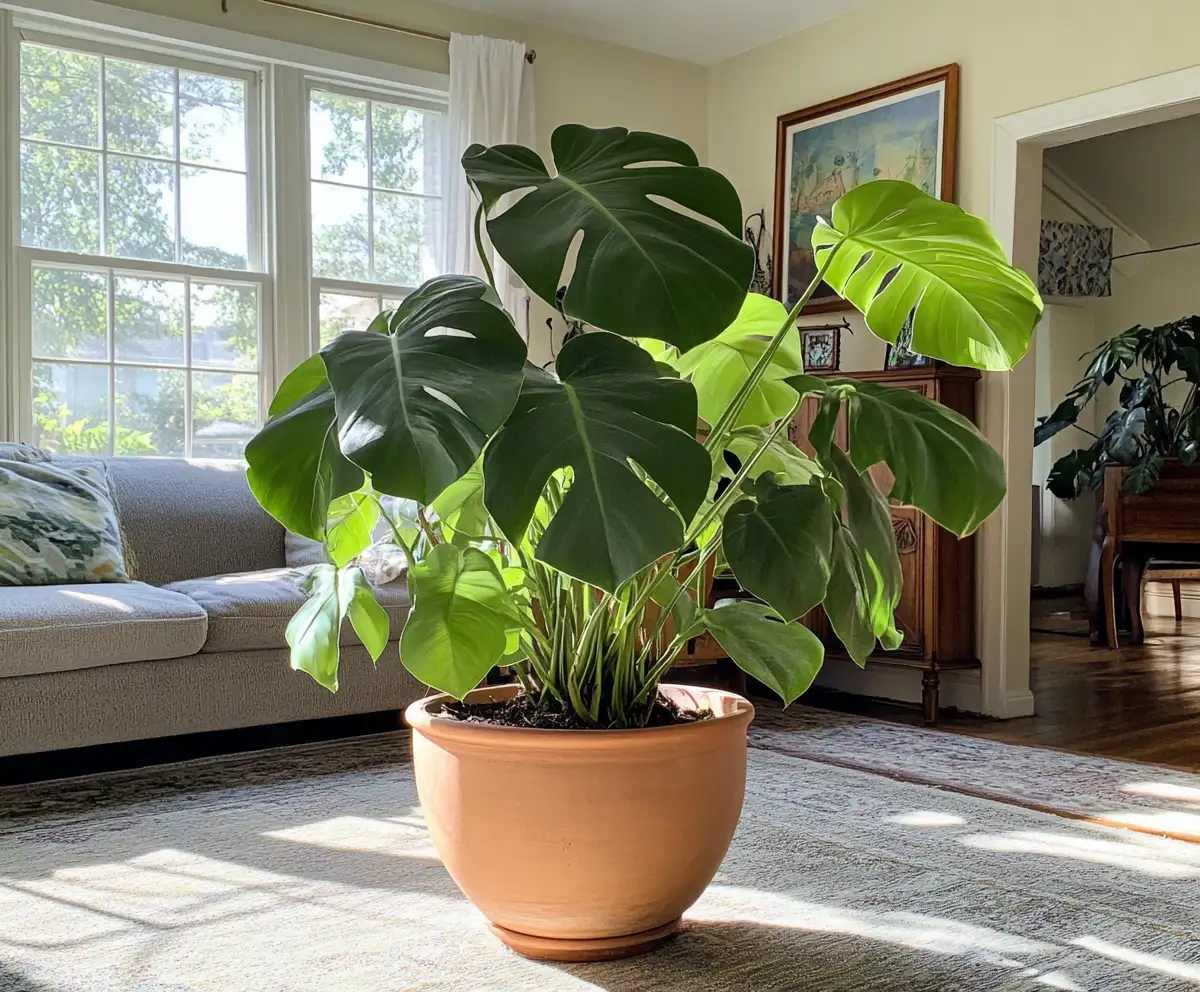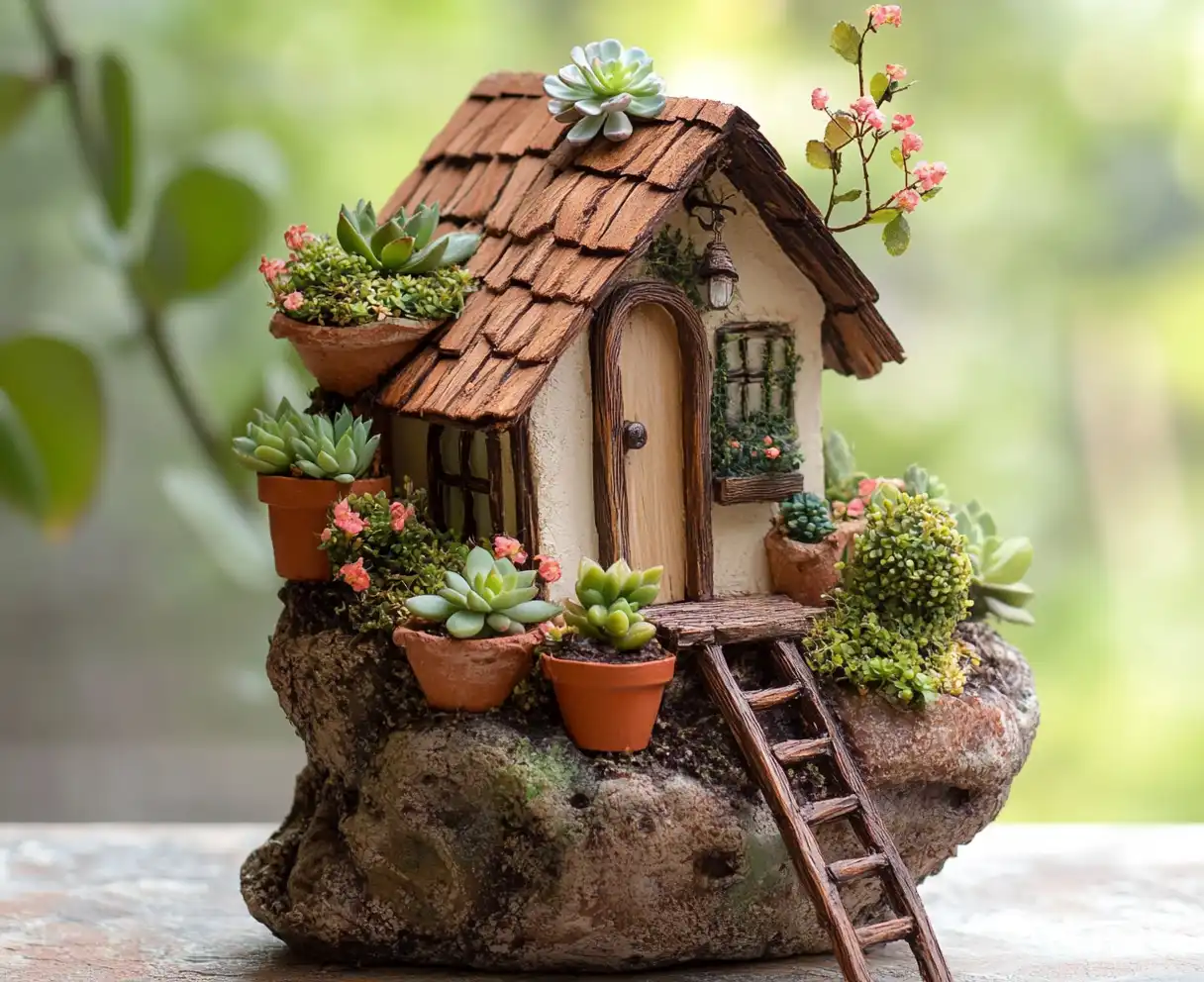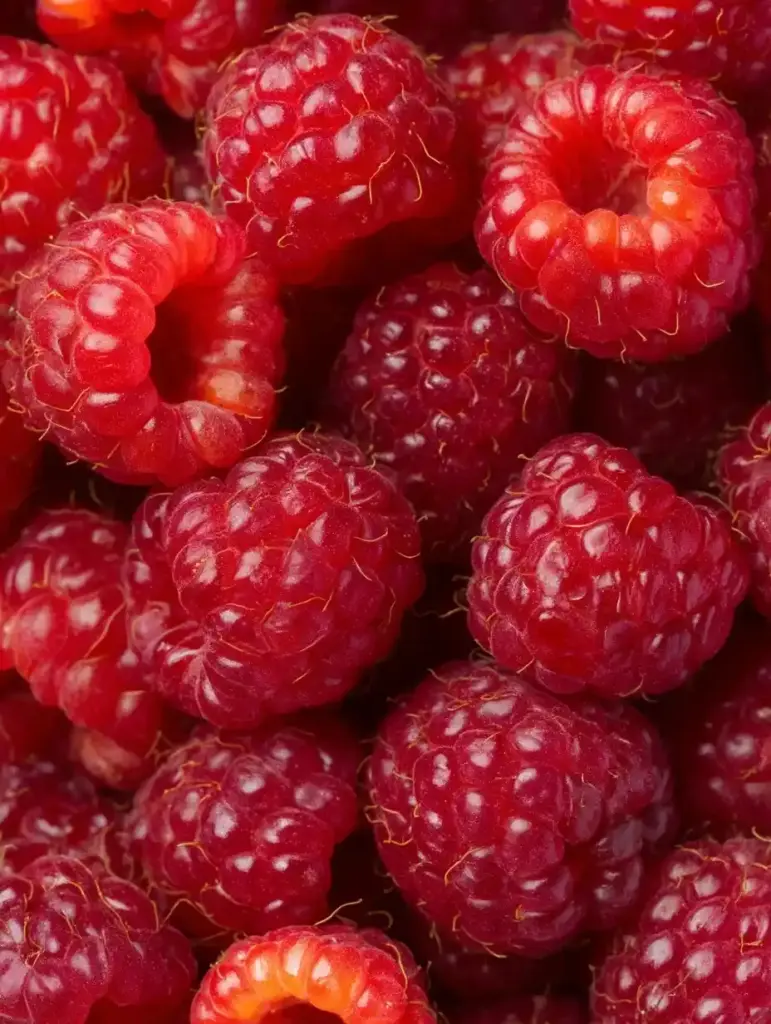Raspberries are among the most rewarding fruits you can grow, especially when space is limited. Whether you’re working with a compact backyard, a city patio, or a sunny balcony, it’s absolutely possible to grow raspberries successfully — and the results are incredibly satisfying. With just a few raspberry canes and a little planning, you can enjoy plump, juicy berries from early summer through to autumn. In this guide, you’ll learn how to grow raspberries efficiently in small spaces using smart planting tips, container gardening methods, and trellising strategies like those outlined in our raspberry trellis tips for small gardens post. If you’re ready to make the most of your space and grow raspberries with confidence, you’re in the right place.
Table of Contents
🌿 1. Growing Raspberries in a Small Space or Garden
Raspberries are surprisingly well-suited to tight spaces — especially when trained vertically and grown in well-prepped soil. Before you plant, it’s important to plan your layout carefully and choose the right varieties for your environment.
🍇 How Many Raspberry Canes Do You Need for a Good Harvest?
Even a small number of raspberry canes can produce generous amounts of fruit. Here’s a general rule of thumb:
- 2–3 canes for individuals or couples
- 5–6 canes for a small family
- Each cane can yield up to 2 pounds (around 900g) of fruit
- Expect 6 small punnets per cane in an average season
💡 Tip: Combine early and late-fruiting varieties to extend your harvest window.
📏 How Much Space Do Raspberry Canes Need?
Raspberries don’t need acres of land — but spacing is still essential to avoid overcrowding and disease:
- Plant canes 12 inches (30 cm) apart
- Leave at least 12 inches of depth per row for airflow and staking
- Canes grow tall — up to 8 feet (2.5 meters) — so vertical support is key
- Allow some breathing space from fences and walls for circulation
🌱 High-Yielding Raspberry Varieties for Small Spaces
Selecting the right varieties can make a big difference in small-space gardens. These high-yield cultivars are proven performers:
- For U.S. gardens: Boyne, Cascade Delight, Killarney, Royalty
- For U.K. climates: Glen Ample, Glen Mor, Glen Fyne
These cultivars are bred for flavor, disease resistance, and generous crops — ideal for tight quarters.
🍂 Autumn-Fruiting Raspberries
If you want to keep the berry bounty going into fall, consider autumn-bearing types:
- Fruiting typically starts in late August through September
- Canes are shorter and easier to manage in pots or tight borders
- Some varieties can double crop with advanced pruning
However, for shady urban corners, blackberries might outperform autumn raspberries due to light limitations.
🌞 Best Places to Plant Raspberry Canes
Raspberries thrive in unique spots that often go unused in small gardens:
- Northeast or north-facing fences are ideal
- Look for areas with good drainage but consistent moisture
- Protect canes from wind with trellises or natural barriers
- Avoid full, scorching sun — raspberries actually prefer partial sunlight
🛠️ How to Train Raspberry Canes
Training your canes is key to maximizing space and keeping plants healthy:
- Use basic materials like 6-foot posts, twine, or wire
- Create a simple trellis with 2–3 levels of support: 2 ft, 4 ft, and 6 ft
- Tie canes loosely through support wires to guide vertical growth
- No need for fancy setups — even a DIY beanpole tripod can work
🪴 2. Growing Raspberries in Pots & Containers
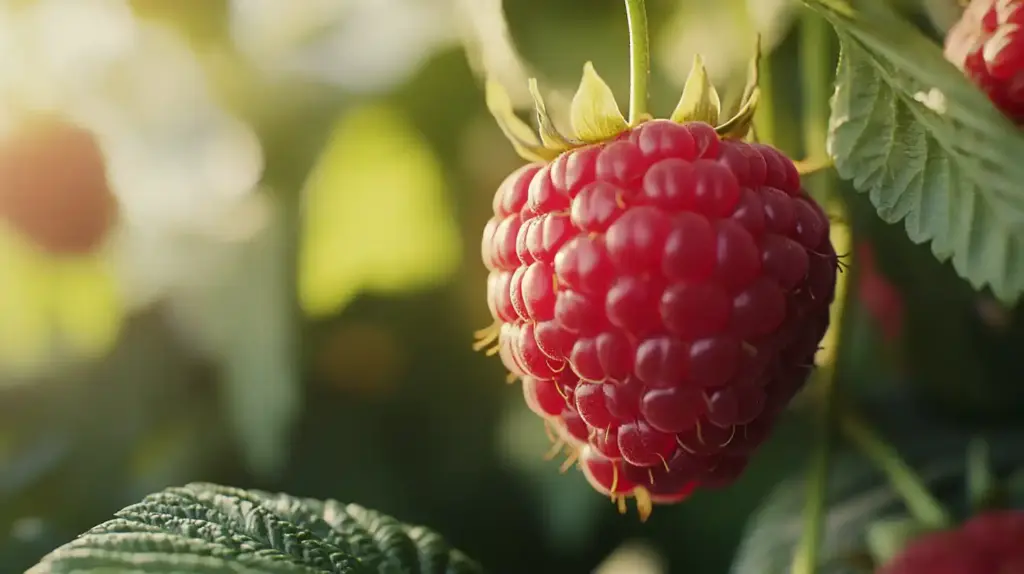
Yes, you can grow raspberries on a patio or balcony!
If you’re tight on space but still want to grow raspberries, containers can be your best friend. With the right variety and pot setup, you can enjoy a healthy harvest without ever digging a garden bed.
🌿 Can Raspberries Grow Well in Containers?
Absolutely — but with a few considerations:
- Choose pots at least 20 inches wide to allow root expansion
- Ensure excellent drainage — raspberries hate soggy soil
- Add 1–2 inches of gravel at the bottom of the pot to prevent root rot
- Use loam-based compost mixed with organic matter for healthy growth
However, keep in mind that traditional raspberry canes need room to spread. That’s where dwarf varieties shine.
🌱 Best Dwarf Raspberry Varieties for Containers
For compact spaces, dwarf raspberry bushes offer all the flavor with less vertical sprawl. These varieties are perfect for container gardening:
- Ruby Beauty – only grows to ~3 feet but produces heavily
- BonBon Berry Yummy
- LowBerry Baby Dwarf
- LowBerry Little Sweet Sister
- LowBerry Goodasgold
These cultivars are specifically bred to thrive in pots while maintaining respectable yields. They also tend to have more branching and bushy habits, reducing the need for trellising.
🛒 Tip: Look for “patio raspberries” at garden centers — many come pre-pruned and ready for small containers.
🌼 3. Raspberry Plant Care

Healthy canes mean bigger, juicier harvests
Proper care is key to ensuring your raspberry plants stay productive and disease-free. From planting to feeding, here’s how to give your raspberries the best chance to thrive.
📅 When to Plant Raspberries
The ideal time to plant raspberry canes is during their dormant period:
- Late autumn to early spring (November to March)
- Aim for a dry, cool day — not frozen or waterlogged soil
- Planting before Christmas allows more time for root establishment
🌱 Best Soil for Raspberries
Good soil makes a world of difference, especially for shallow-rooted raspberry plants:
- Prefer well-draining, loamy soil enriched with organic matter
- Avoid heavy clay or chalky soils, though raspberries are surprisingly tolerant
- Use raised beds or add grit/compost to improve drainage
- Provide shade at soil level (e.g., via mulch or companion plants) to reduce summer drying
🌿 How to Plant Raspberries
Set your plants up for success with these steps:
- Clear the area of weeds and old roots
- Mix in phosphorus-rich compost or bonemeal
- Space canes 12–18 inches apart
- Dig shallow holes (~2 inches deep), spreading out the roots
- Cover, firm, and water in well
- Prune new canes to about 10 inches (unless pre-cut)
💧 How to Water Raspberries
Because raspberry roots are shallow, moisture management is critical:
- Water lightly and frequently during dry spells
- Avoid overwatering — it can cause root rot
- Morning watering prevents sogginess overnight
- Add a mulch layer (e.g., straw, wood chips, grass clippings) to lock in moisture
🍽️ Feeding Raspberry Plants
To keep your raspberry plants productive:
- Apply a potassium-rich fertilizer in late winter (e.g., sulfate of potash, composted chicken manure)
- Avoid too much nitrogen — it promotes leaf and cane growth at the expense of fruit
- Replenish mulch regularly with nutrient-rich organic matter
🌱 4. Growing Raspberries From Cuttings
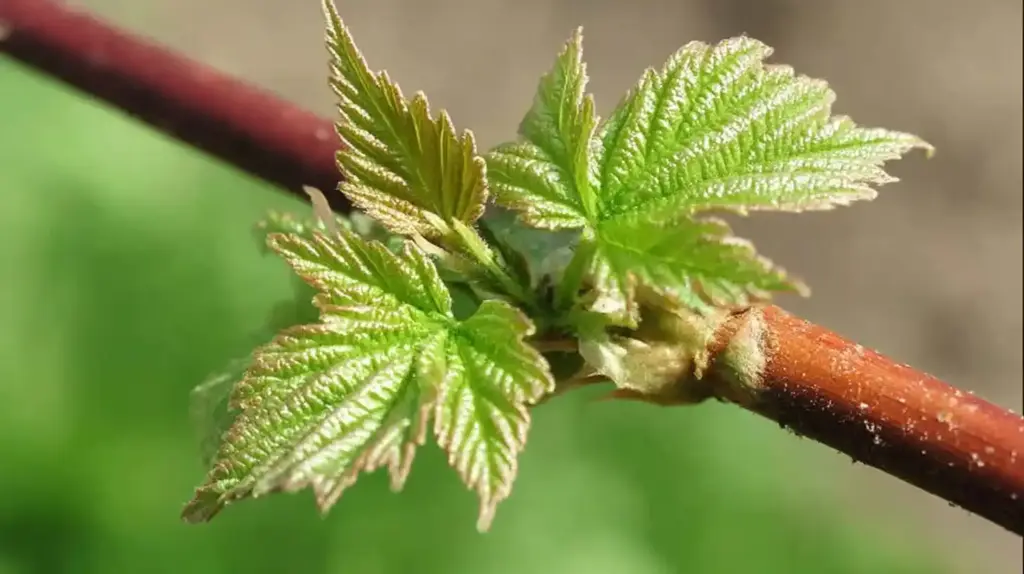
A simple way to expand your raspberry patch for free
If you’ve ever admired a friend’s raspberry harvest, here’s some good news — you can likely grow your own from their garden! Propagating raspberries from cuttings is one of the easiest ways to expand your berry bounty without spending a dime.
✂️ How to Take Raspberry Cuttings
Raspberry plants naturally send out root suckers, or offshoots, which can be transplanted into your own garden. Here’s how:
- Find a healthy sucker growing just outside the main raspberry patch
- Ensure the sucker has at least 6 inches of root attached
- Use a clean, sharp spade to dig it out carefully
💡 Tip: Ask fellow gardeners to share their “extras” — they often dig these up anyway!
🌿 How to Plant Raspberry Cuttings
Treat your cutting like a bare-root plant:
- Replant at the same soil depth as it was growing
- Water thoroughly after transplanting
- Follow the same care guidelines: spacing, staking, and mulching
⚠️ Important: Only accept cuttings from healthy plants. Sharing diseased roots can spread issues like cane blight or root rot.
Growing raspberries from cuttings isn’t just frugal — it’s a great educational activity for kids to learn about plant life cycles.
🍓 5. Harvesting Raspberries
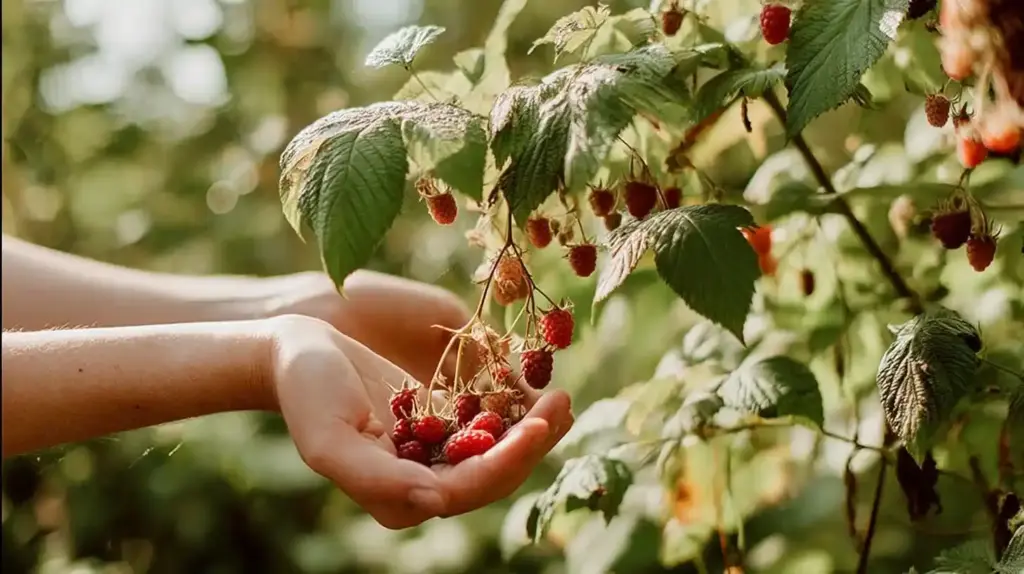
Picking ripe berries at just the right time
After all your care and patience, it’s finally time to enjoy the fruits of your labor. Harvesting raspberries is straightforward, but timing and technique make all the difference in preserving quality and maximizing your yield.
⏰ When Are Raspberries Ready to Pick?
- Summer-fruiting varieties: Typically ripen June through August
- Autumn-fruiting varieties: Start producing in late August through September
Look for berries that are:
- A deep red or pink (depending on the variety)
- Plump and slightly soft to the touch
- Easily pull away from the stem with a gentle tug
🧺 Harvesting Tips
- Pick berries every couple of days during peak season
- Harvest early in the morning, but not right after rain
- Use shallow containers to avoid squashing delicate fruit
- Always remove damaged or overripe berries to reduce pest issues
⚠️ Unripe berries won’t ripen after picking, so don’t rush the harvest.
🐦 Protecting Your Harvest
Birds and squirrels love raspberries as much as you do. To minimize theft:
- Use netting over canes
- Pick regularly so ripe berries aren’t left exposed
- Avoid planting close to feeders or known squirrel paths
✂️ 6. How To Prune Raspberries
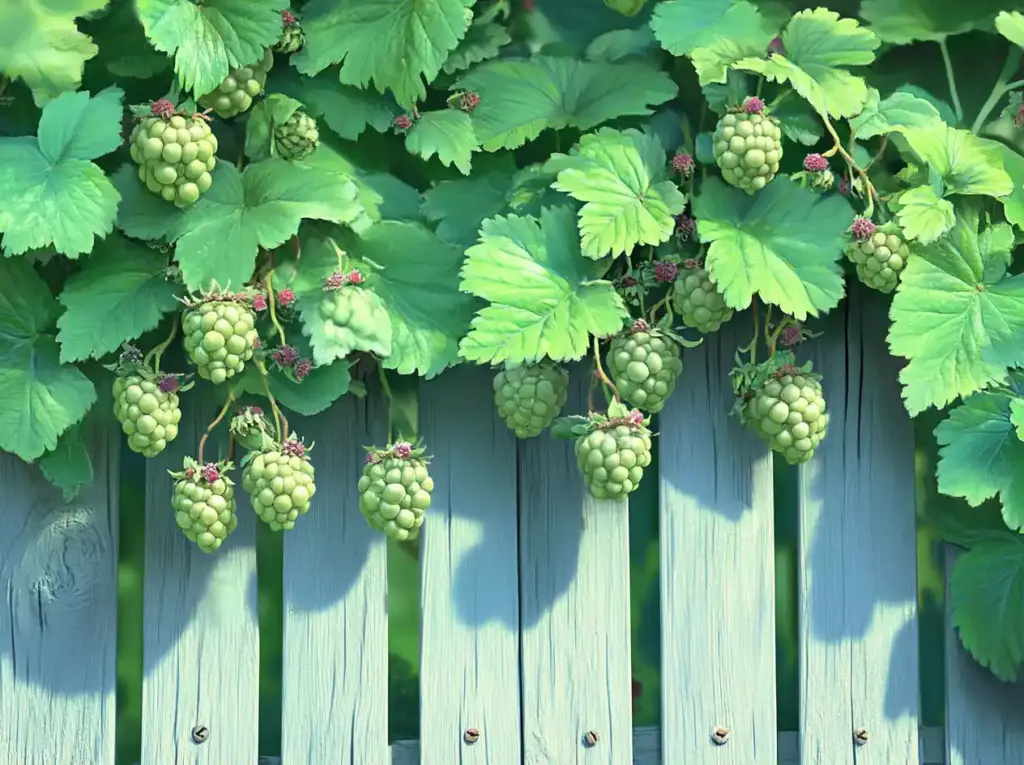
Pruning for better harvests and healthier canes
When you grow raspberries, pruning might seem confusing at first — but mastering a few simple techniques will drastically improve your yield and make plant care easier year after year.
🧬 Understanding Raspberry Growth Cycles
Raspberries grow in two main types, and each needs a different pruning approach:
- Summer-fruiting raspberries
- Canes grow in year 1, fruit in year 2, then die
- Autumn-fruiting raspberries
- Canes grow and fruit in the same year, then die back
🔄 New canes = green and flexible; old canes = brown, woody, and brittle
🌿 Pruning Summer-Fruiting Varieties
- After harvest, cut old, fruited canes down to ground level
- Leave new green canes — these will fruit next summer
- Thin out weaker new canes to improve airflow (aim for 4–6 strong canes per plant)
- Tie the remaining new canes to supports for vertical growth
🍁 Pruning Autumn-Fruiting Varieties
- In late winter, cut all canes down to soil level
- This encourages fresh new growth for the coming season
- Optionally, leave a few strong canes for a possible early summer crop (advanced method)
💡 Prune in dry weather to reduce the risk of fungal infections like spur blight.
Proper pruning ensures your canes stay manageable, improves airflow, and boosts berry production — a must in tight garden spaces.
🧊 7. How To Store Raspberries
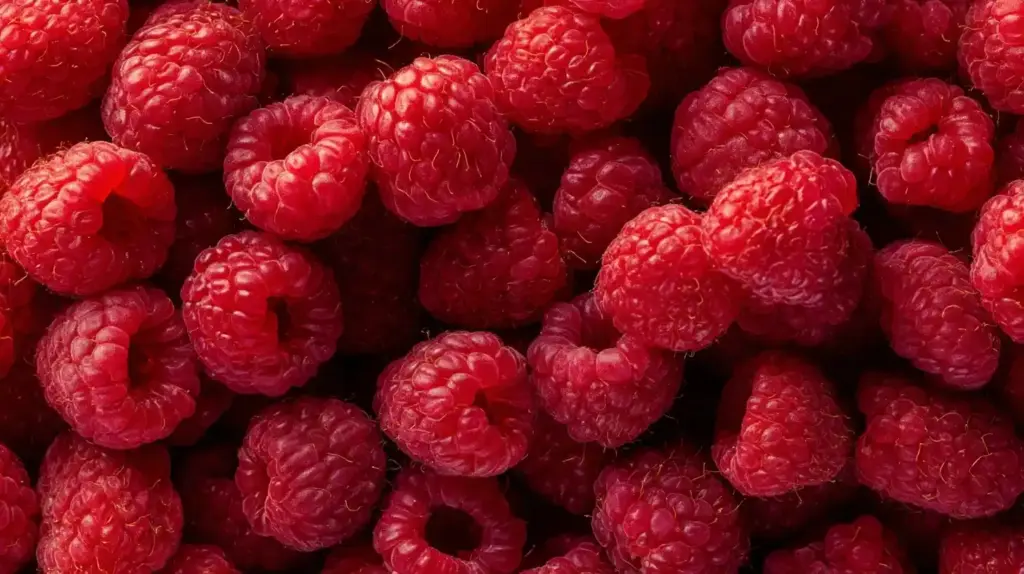
Preserve freshness for longer enjoyment
Raspberries are delicate by nature, so once picked, they need careful handling. Whether you’re saving them for tomorrow or stocking up for winter smoothies, here’s how to keep them in top condition.
🧺 Storing Fresh Raspberries
- Store in a single layer — avoid piling them to prevent bruising
- Place in a shallow container lined with paper towel
- Keep in the refrigerator, ideally in the crisper drawer
- Use within 48 hours for best flavor and texture
💡 Don’t wash raspberries until just before eating — moisture speeds up spoilage.
❄️ Freezing Raspberries
Want to keep your harvest longer? Freezing is the best method:
- Gently rinse and dry the berries
- Spread them on a baking tray in a single layer
- Freeze for at least 3 hours
- Once firm, transfer to freezer-safe bags or glass jars
Properly frozen raspberries can last up to 12 months and are perfect for baking, smoothies, or making jam.
🐛 8. Common Raspberry Pests, Diseases & Problems

Keep your raspberry patch healthy and pest-free
Even in small gardens, raspberries can attract a variety of pests and are prone to certain diseases. Knowing what to look for — and how to prevent it — is essential for long-term success.
🛡️ Simple Ways to Prevent Problems
- Space canes properly to allow good airflow
- Water in the morning to reduce excess moisture overnight
- Use raised beds or well-drained soil to avoid root rot
- Mulch lightly to retain moisture without suffocating roots
- Pick ripe fruit promptly and remove moldy berries
- Regularly inspect leaves and stems for early signs of trouble
A healthy, well-maintained raspberry bed is your best defense against most problems.
🐞 Common Raspberry Pests
- Raspberry Beetle & Worm
- Signs: Small white larvae inside fruit; brown dry patches
- Prevention: Clean up fallen fruit, rotate soil, cover plants with mesh in spring
- Raspberry Sawfly
- Signs: Leaves stripped to veins
- Control: Hand-pick caterpillars and drop into soapy water
- Raspberry Cane Borer
- Signs: Wilted or black cane tips
- Action: Prune and dispose of affected tips
- Raspberry Aphids
- Signs: Curled leaves and sticky residue
- Fix: Spray with mild soapy water; attract ladybirds and lacewings
- Leaf & Bud Mite
- Signs: Yellow blotches on leaves
- Impact is minimal but can stress plants in poor conditions
- Spotted Wing Drosophila (fruit fly)
- Signs: Tiny larvae in berries
- Control: Harvest early, use fly traps
- Picnic Beetles
- Signs: Beetles with orange spots feeding on fruit
- Tip: Avoid leaving overripe fruit on plants
🍂 Common Raspberry Diseases
- Raspberry Root Rot
- Cause: Overwatering or poor drainage
- Fix: Improve drainage, avoid heavy soil, don’t overwater
- Spur Blight
- Signs: Dark spots under leaves, poor cane growth
- Prevention: Prune for airflow, avoid overcrowding
- Cane Blight
- Signs: Cracks in older canes, small black fungal spots
- Treatment: Remove infected canes, improve airflow, refresh topsoil
- Raspberry Rust
- Signs: Yellow-orange spots on leaves
- Fix: Prune weak canes, don’t allow dense leaf cover
⚠️ Tip: Avoid planting raspberries near other vulnerable crops (see Section 9) to reduce the risk of cross-contamination.
🌻 9. Best Companion Plants For Raspberries
Boost growth, deter pests, and make the most of small spaces
Companion planting isn’t just for vegetables — it works wonders for fruit like raspberries too. When chosen wisely, nearby plants can feed the soil, repel pests, and enhance air circulation, all while helping you squeeze more productivity into your limited growing space.
🥕 Best Vegetables & Herbs to Grow With Raspberries
These companions do double-duty by improving soil health and warding off raspberry pests:
- Alliums (garlic, onions, chives)
- Natural fungicides; repel aphids and cane borers
- Chives also attract beneficial pollinators
- Turnips
- Shade-tolerant and soil-enriching
- Their anti-fungal properties benefit raspberry roots
- Peas
- Fix nitrogen into the soil and don’t block airflow when planted low
- Chamomile
- Natural anti-fungal, attracts pollinators
- Bonus: make calming tea from the blooms!
- Spinach
- Grows well in raspberry’s partial shade and prevents weeds
These plants maximize vertical and horizontal space, ideal for container gardening or tight rows.
🌼 Other Good Companion Plants for Raspberries
- Tansy – Deters ants and beetles
- Yarrow – Attracts beneficial insects like lacewings
- Chervil – Improves neighboring plants’ flavor and growth
- Nasturtiums – Trap crop for aphids; add edible flowers to your salads
🚫 Plants to Avoid Near Raspberries
Some plants share diseases or compete too aggressively for space and nutrients:
- Tomatoes, Peppers, Potatoes, Eggplants (Aubergines)
- All are vulnerable to Verticillium wilt, which can spread to raspberries
- Other cane fruits (e.g., blackberries, gooseberries)
- Prone to similar fungal infections — avoid crowding them together in small beds
Cramming these in with raspberries in limited space can lead to soil exhaustion or increased disease risk.
❓ Frequently Asked Questions (FAQ)
1. Can I grow raspberries in a small garden?
Absolutely! Raspberries are one of the best fruits for small gardens. With vertical supports and proper spacing, even a few canes can provide pounds of fruit in tight spaces.
2. What’s the best way to grow raspberries in containers?
Use dwarf varieties like Ruby Beauty or LowBerry types. Choose large pots (at least 20 inches wide), ensure good drainage, and feed with a potassium-rich fertilizer in early spring.
3. How long do raspberry canes take to produce fruit?
Most raspberry canes fruit in their second year if they’re summer-fruiting. Autumn-fruiting varieties can produce fruit in their first year, making them ideal for quick results in small gardens.
4. How often should I water raspberry plants?
Water little and often during dry spells — about 2–3 times per week depending on soil and climate. Avoid waterlogging, and always water in the morning to prevent root rot.
5. Can I grow raspberries indoors?
It’s not ideal. Raspberries need strong light, air circulation, and cold dormancy in winter. However, a sunny balcony or outdoor patio with dwarf raspberry varieties can work very well.
6. What is the best support structure for raspberries?
Use a simple trellis with horizontal wires or string at 2, 4, and 6 feet. Even makeshift bamboo stakes or tripods can do the job in tight spaces.
7. Do I need to prune raspberries every year?
Yes. Pruning is essential to maintain healthy growth and fruit production. The method depends on the type:
- Summer-fruiting: Remove old canes after harvest
- Autumn-fruiting: Cut all canes back in winter
✅ Conclusion
Even in the smallest of gardens, balconies, or patios, it’s absolutely possible to grow raspberries successfully. With the right combination of smart spacing, careful pruning, and a few helpful companion plants, you’ll enjoy sweet, juicy harvests year after year — without needing a large plot or commercial setup.
Whether you’re planting raspberry canes in containers or training them along a fence or trellis, these practical techniques will help you grow raspberries like a pro — even in the smallest backyard. With the right setup, such as a DIY raspberry trellis, and consistent care, you’ll be well on your way to mastering how to grow raspberries successfully, season after season.
🌿 Love gardening inspiration? Follow me on Pinterest for bold plant ideas, tips, and seasonal color!
More Posts

